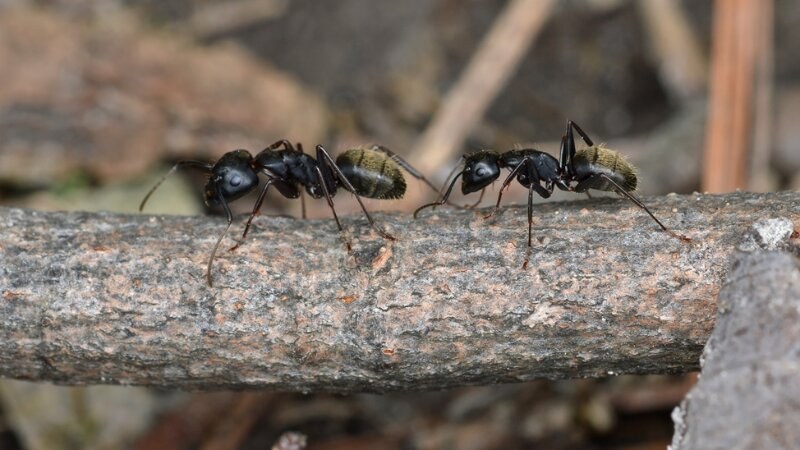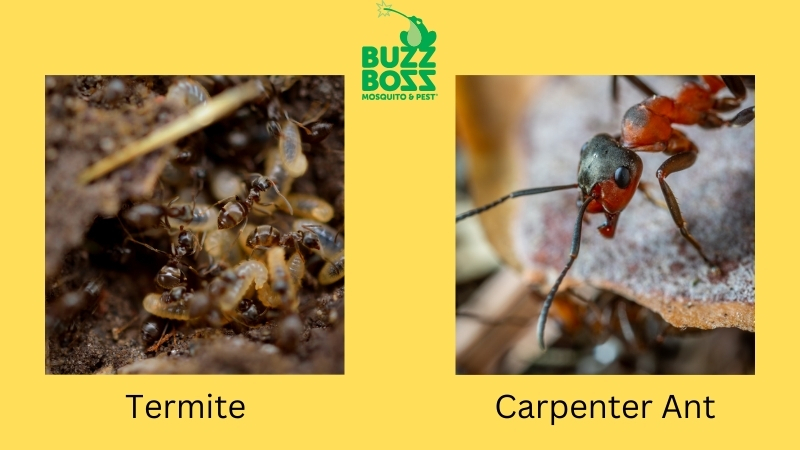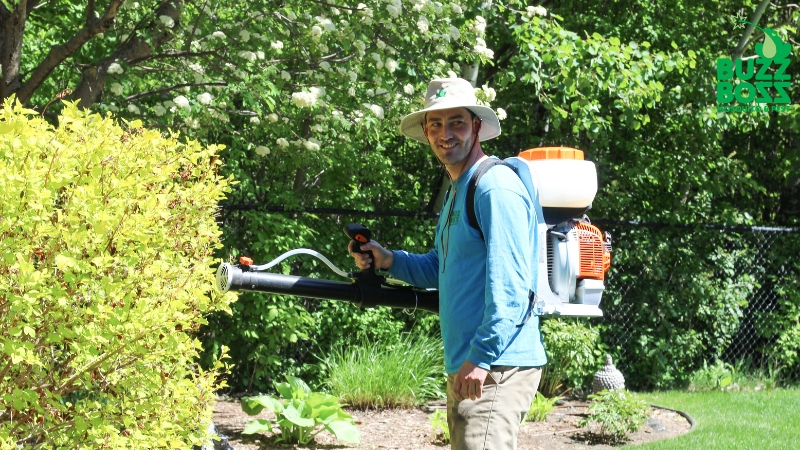How to Identify a Carpenter Ant Infestation in Your Regina Home
Reading time: 7 minutesIf you're finding mysterious sawdust trails in your yard, it's time to play detective; there might be uninvited guests at work. There is also a good chance that you’ve misidentified the culprits.
Let’s face it, termites get more street cred for turning prized wooden structures into their personal playgrounds. But they aren’t the only woodworkers in town. Carpenter ants can be just as destructive, quietly carving out their own version of home improvement in your space.
So, let’s dive into how you can spot carpenter ants and the steps you can take to halt their handiwork before your Regina home renovation goes too far without your consent.

What are Carpenter Ants?
Carpenter ants, known scientifically as Camponotus, are among the largest ants you'll encounter in your backyard. Typically black or red, these ants can also showcase brownish or yellowish colours depending on the species.
They range from 6 to 25 millimetres in length, with particularly robust mandibles that they use not for eating wood but for excavating it to create their nests.
These industrious ants prefer moist or damaged wood to establish their colonies, making homes and wooden structures particularly vulnerable if they have existing water damage or areas softened by rot.
Carpenter ants are nocturnal, active at night when they venture out to feed. They're opportunistic feeders who will munch on proteins and sugars. This includes a range of items from insect parts and meat to syrup, honey, and fruits in your home.
They’re likely to be found in areas where wood is abundant, like decks, porches, tree stumps, and fence posts, making their way into homes as they expand their network of colonies.
Facts about Carpenter Ants
Carpenter ants are actually quite important in the ecosystem, aiding in the decomposition of dead, decaying trees, thus enriching the forest floor.
Here are some other interesting facts about carpenter ants:
- A single queen carpenter ant can live up to 25 years and is capable of laying over 9,000 eggs in her lifetime. This longevity and reproductive capacity can lead to well-established colonies that are difficult to eradicate.
- Carpenter ants are omnivorous. They primarily feed on proteins and sugars, which include live and dead insects, meats, fats, and sugary substances like honeydew, syrup, and fruit juices. Unlike termites, they do not consume the wood they excavate.
- The colonies of carpenter ants are structured with a clear division of labour. There are workers, soldiers, and reproducers, each playing specific roles that ensure the survival and expansion of their colony.
- Carpenter ants establish their nests in moist or decaying wood, which can include tree stumps, old fences, and wooden structures of houses. They excavate wood to create elaborate tunnel systems.
- The primary threat from carpenter ants arises from their nesting activities. They hollow out wood to create extensive galleries and tunnels, which, over time, can severely weaken the structural elements of your home.
- The lifecycle of carpenter ants begins with the nuptial flight, typically in the spring or early summer when new queens mate with males and then establish new colonies. The workers that emerge from these colonies set out to expand and maintain the colony, further promoting its growth and survival.
- Carpenter ants are highly social insects that communicate using pheromones, sounds, and touch. These communication methods are crucial for maintaining the social structure of the colony, coordinating activities such as foraging, nest building, and defending against predators.
- They are known for their ability to form long foraging trails extending up to 100 meters from their nest. They use these trails to transport food back to their colony, often marking the path with pheromones that guide other ants to food sources.
Termites and Carpenter Ants: Know the Difference

It's easy to mix up termites and carpenter ants since they’re both infamous for causing havoc in wooden structures around your home. But they are different, so let’s break down how you can spot which of the two you’re dealing with:
Feature | Carpenter Ants | Termites |
Appearance | Larger, with a distinct narrow waist. Black, red, or brown colours. Visible antennae are bent. | Smaller, uniform body with no visible waist. Creamy white to dark brown or black colours. Antennae are straight. |
Behaviour | Do not eat wood. Only remove wood to build nests. Active during the day. | Eat wood, causing more extensive structural damage. Mostly active and visible during swarming season. |
Damage | Create clean and smooth galleries in wood. Wood damage is less extensive but can be significant over time. | Create rough, ragged galleries filled with mud. Wood damage is extensive and includes soil in the damaged area. |
Sawdust | Produce piles of sawdust-like material (frass) outside of their galleries. | Do not produce sawdust. Leave behind mud-like material in galleries. |
Nesting | Nest in moist wood but may extend to dry wood. Satellite colonies can exist away from moisture. | Build colonies in the ground; damage can extend to wood in contact with soil or with high moisture content. |
Swarming | Rarely swarm. If they do, it’s generally in the spring. | Swarmers emerge in large numbers, often in spring, to establish new colonies. |
How Do I Prevent Carpenter Ants from Entering My Yard?
Prevention is always better than the cure, so follow these tips to make sure carpenter ants don’t make a home in your yard:
- Regularly clear away decaying or infested wood from around buildings.
- Store firewood away from building sides and elevate it to prevent direct contact with the ground.
- Do not bury stumps or other wood debris close to your house to avoid creating nesting grounds.
- Inspect and maintain the state of decorative props like retaining walls and driftwood.
- Replace any decaying or infested structural wood with sound material.
- Remove food sources that could attract ants by keeping food in sealed containers and regularly sweeping up crumbs and other food fragments.
- Keep your yard clean to prevent infestation.
- Check for and seal off any cracks or crevices around the structure of your home to prevent entry.
- Keep trees and bushes trimmed and away from structures to prevent physical bridges for ants.
- Clean gutters and ensure they are free of debris to prevent water accumulation that could attract ants.
- Make sure downspouts direct water away from your house to avoid moisture build-up.
- Check outdoor furniture regularly for signs of carpenter ants nests, especially those made of wood.
- Keep yard areas clean and free of unnecessary clutter where ants could nest.
- Conduct regular pest inspections, especially in the spring and fall, to catch early signs of infestation.
- Consider opting for year-round pest management like BuzzShield® Complete for annual inspections, ongoing protection, and early removal of infestations.
How to Get Rid of Carpenter Ants

If you’re too late and carpenter ants have already made their home in your yard, you can go for these targeted actions that eliminate the colony:
- Introduce Natural Predators: Natural predators like birds, toads, lizards, praying mantises, and ladybugs can help manage carpenter ant populations. Encourage these creatures by creating habitats that support them, such as ponds for toads, rock piles for lizards, and gardens that attract mantises and ladybugs. Installing birdhouses can attract bird species that feed on ants. But make sure to regularly clean it and add fresh water.
- Use Ant Baits: Utilise baits designed to be carried back to the nest by worker ants. These baits contain slow-acting pesticides that are ingested by the colony, ultimately reaching and eliminating the queen. This method ensures the collapse of the colony from within.
- Direct Treatments: Apply insecticides directly to identified nests. This can involve drilling into wood where nests are suspected and injecting insecticide to reach the heart of the colony. For nests within walls, dust formulations can be effective as they spread throughout the ants' tunnels. The trick, however, would be to locate the nest.
- Professional Application: In cases of extensive infestations or when nests are difficult to access, professional ant control services can apply a range of control solutions that are not available generally. Our experts can pinpoint the colony’s location accurately and use targeted applications like our BuzzShield® Complete or BuzzShield® Insect for definitive solutions and an insect-free yard!
Declare Your Home a Carpenter Ant-Free Zone with Buzz Boss

Don’t let carpenter ants turn your home into their safe haven. Follow our guide and protect your Regina home from these unwanted visitors.
If you’ve seen a trail of sawdust and suspect a carpenter ant infestation, Buzz Boss is here to help. Our team of experts specializes in identifying and eliminating carpenter ant problems with tailored solutions.
Contact us today for a consultation and get an estimate tailored to your specific needs. Let’s work together to keep your space safe and secure. Buzz Boss provides pest control services in many parts of Western Canada, including Calgary, Edmonton, Red Deer, Regina, Saskatoon, Winnipeg, and Okanagan.

